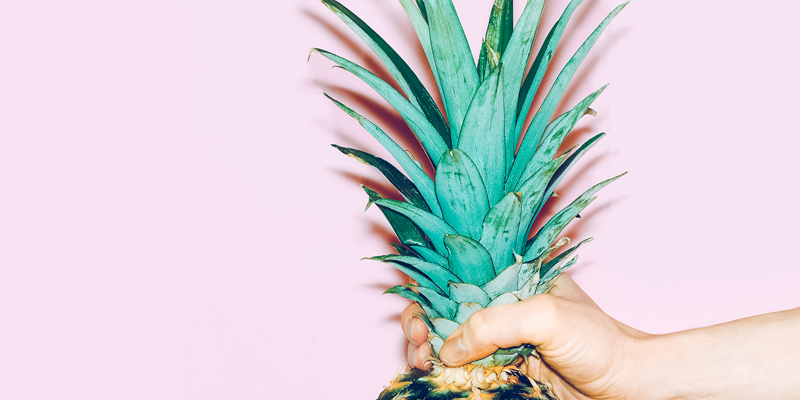Sierra Nevada Brewing Company, the nation’s third-largest—and arguably most important—beer maker, recently announced that two new “flagship extensions” are joining the 2017 lineup, Sidecar Orange Pale Ale and Tropical Torpedo IPA. This is horrifying and heart-breaking and also completely rational and probably healthy: According to “Brewbound,” Sierra Nevada Pale Ale sales are down 5.8 percent this year, while Torpedo Extra IPA has slumped 9 percent.
This is largely due to competition that’s increasing faster than consumer demand, which is squeezing sales for many iconic craft brands; Samuel Adams Boston Lager was down nearly 14 percent through the middle of May, and New Belgium Fat Tire’s struggles roughly mirror SNPA’s. The increased distribution footprints of recently corporatized IPAs from Ballast Point, Goose Island, Founders, and Lagunitas have also challenged Sierra’s longtime dominance of the grocery store’s hop-forward beer aisle.
But the two slumping Sierras are also victims of a change in consumer tastes. Simply put, a lot of pale ale drinkers like ‘em fruitier these days. I still happen to prefer the Sierra brands’ bitter-lemon and pine-hop profile, and I’m far from alone in that sentiment, but there’s no denying the rise of the sweeter, juicier, less biting style of IPA pioneered the last several years in northern New England.
A lot of those New England IPAs are great (although I have no aesthetic use for the clouds of yeast or hop dust or wheat flour or whatever other residue produces their signature haze), and they’ve done drinkers a great service by providing a counterpoint to the over-the-top bitter IPAs West Coast brewers were starting to get carried away with. But I’m less sanguine about the role they’ve almost certainly played in the recent rise of the fruited pale ale.
I say “almost certainly” because I have no direct evidence, and because it’s impossible to overlook the huge influence of Ballast Point Grapefruit Sculpin. It seems like every time I mention Ballast Point I’m complaining about their prices or mentioning that they made a billion of Constellation’s dollars for putting grapefruit in an IPA before anyone else thought of it. That’s uncharitable. Ballast Point was a highly credible, well-established brewery long before it started tossing grapefruit (and habanero, and mango, and pineapple) into IPA, and the original Sculpin is so good that I almost didn’t include it in a blind IPA-tasting I conducted a few years ago because I didn’t think it would have been fair to the rest of the field (Sculpin finished third of 14).
Grapefruit Sculpin has spawned many direct imitators — some of which, like Samuel Adams Rebel Grapefruit, I find to be highly successful — and even more roundabout stepchildren, and as much as it pains me to admit it, I think the new Sierra Nevada Sidecar Orange is probably in that latter category. The beer hasn’t been released yet, but I don’t imagine my assessment would change whether I loved it, hated it, or somewhere-in-betweened it. It’s a reactionary move that uses fruit to do the work formerly reserved for hops, and a small but pushy part of my beer-soul finds that sort of thing undignified.
I’m not sure why I feel this way. I’m pretty open-minded about beer styles and brewing methods. I have no problem with tarted-up American goses, imperialized versions of traditionally small beers, quick-fix kettle sours, or even the curious new mandate that every American brewer must release a coffee pale ale before sundown tonight. I also don’t have any problem with the cash-in element of chasing a trend or dreaming up ever more ways to cram the magical “IPA” onto a beer label. I like lots of session IPAs, red IPAs, and rye IPAs, as well as a handful of the better white IPAs.
But I draw a big, dumb line at fruited pale ales and IPAs. I’m a big fan of Boulevard beers, for instance, but I haven’t bothered to try the new Tropical Pale Ale because of my aversion to beers with passionfruit and grapefruit (in this case) added. This is somewhat illogical because I like beers with those flavors when they’re derived from more traditional brewing ingredients. And stout-makers don’t face much prejudice when they use adjuncts to intensify flavors already present in the style; some of the most sought-after bottles on the beer gray market are coffee- or vanilla-infused versions of barrel-aged imperial stouts that have already picked up coffee from the roasted malt and vanilla from the oak. If Great Divide Espresso Oak Aged Yeti, then why not Sierra Nevada Sidecar Orange Pale Ale?
The easy answer is that Sidecar is cheating. If Sierra Nevada wants a pale ale that tastes like oranges, then it should do the honorable thing and throw an Amarillo dry-hop on top of a SNPA knockoff with the caramel dialed down a notch. That seems like a good argument! But it’s one that brings me back to my love of coffee stouts and mango goses. I honestly intended this post to be a denunciation of fruited pale ales, but I’ve talked myself into accepting that they are just as valid as any other modern twist on brewing convention. And my acquiescence isn’t simply a “Hey, they’re not hurting anyone, make some fools happy” capitulation to beer populism. I’ve come full circle to the point where I consider them a welcome and necessary evolution.
I’ll try Sierra Sidecar when it comes out, along with the less controversial Tropical Torpedo (the TT news twisted my undies far less, because the recipe doesn’t seem to rely on actual fruit, and because Torpedo, though excellent, isn’t one of the handful of most significant beers in American history). And I bet I’ll like them, at which point I will write Ballast Point a formal apology for ever having doubted the authenticity of its novel-yet-obvious approach to maximizing fruit flavor.

